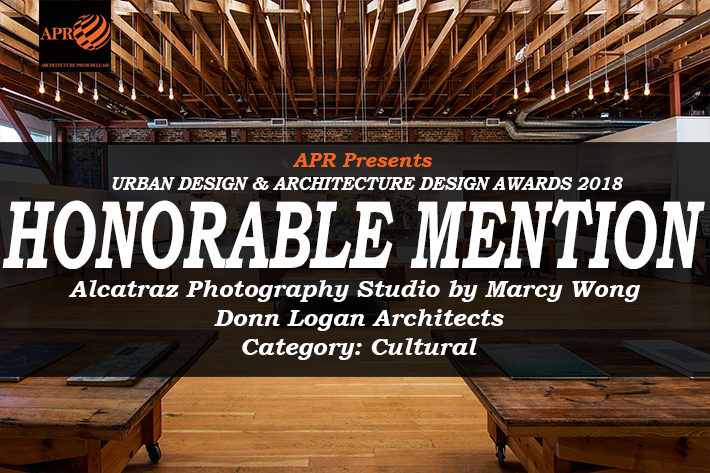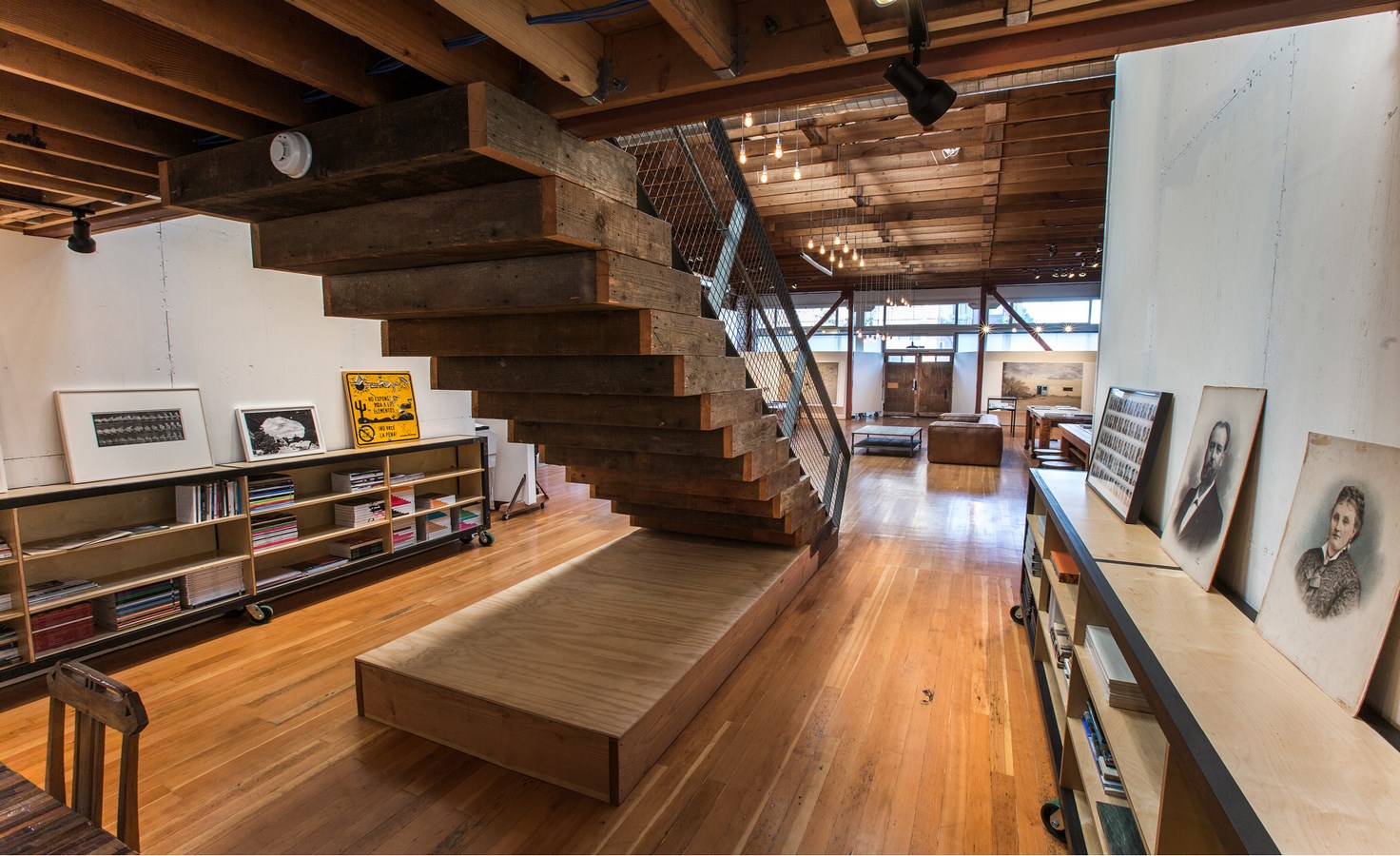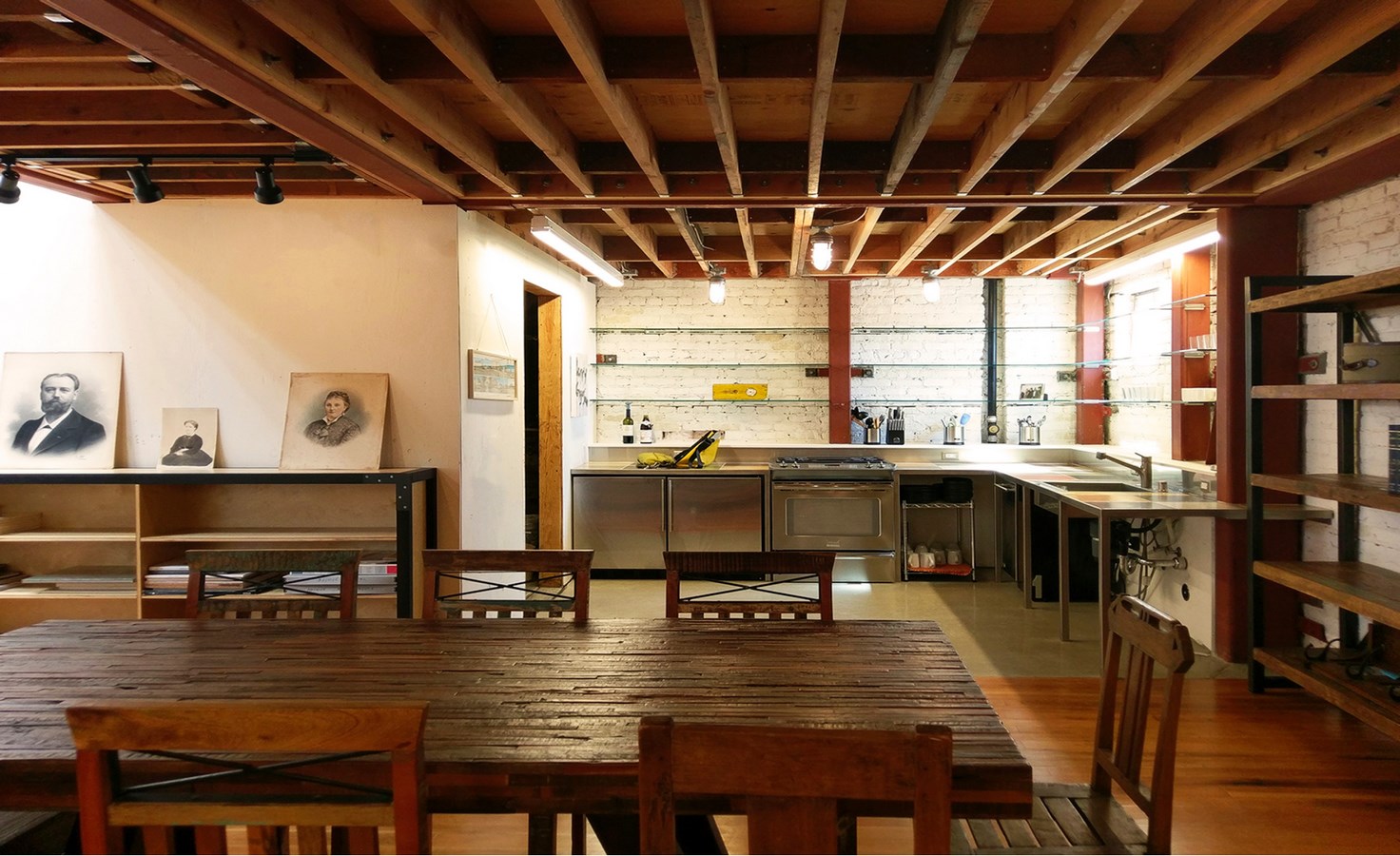The client is an artist who is an internationally acclaimed photographer. His work is physically monumental in scale as well as content, navigating topics that are both political and aesthetic. His art is collected and exhibited by museums world-wide. The lcatraz Photography Studio (named herein for its location’s view of the famous island) provides the artist with a space within which he can design and mock-up full-scale exhibit layouts with museum quality lighting.
Urban Design & Architecture Design Awards 2018
Honorable Mention | Category: Cultural
Architects: Marcy Wong
Studio Name: Marcy Wong Donn Logan Architects
Team Members: Marcy Wong, Donn Logan, Kent Royle, Justin Tang
Country: United States
Website: www.wonglogan.com
Location: Berkeley, CA (USA)
Project Size: 3900 SF
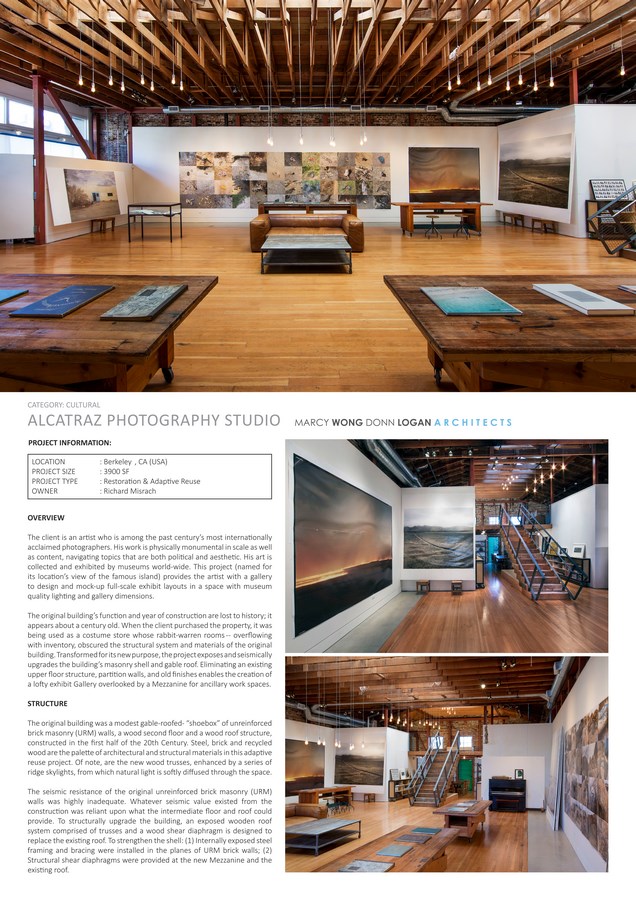
The original building’s function and year of construction are lost to history; it appears about a century old. When the client purchased the property, it was being used as a costume store whose rabbit-warren rooms– overflowing with inventory, obscured the structural system and materials of the original building. Transformed for its new purpose, the project exposes and seismically upgrades the building’s masonry shell and gable roof. Eliminating an existing upper floor structure, partition walls, and old finishes enables the creation of a lofty exhibit Gallery overlooked by a Mezzanine for ancillary work spaces.

Steel, brick and recycled wood form the palette of materials in this adaptive reuse project. The structure is exposed to create a spatially dramatic context for, but not visually overwhelm the exhibited art. Of note are the new wood trusses, which enhanced by a series of ridge skylights, softly diffuse natural light throughout the exhibit Gallery and Mezzanine. A notable aspect of this project is the extent to which the materials used for the construction of the architectural elements, flooring, and furniture are salvaged wood, in many cases, harvested from deconstructing parts of the original building. This use of recycled and highly local materials not only embraces the many positive characteristics of wood as a material including low embodied energy, low carbon impact, and sustainability, but helps achieve the architectural sensibility that the client and architect envisioned.
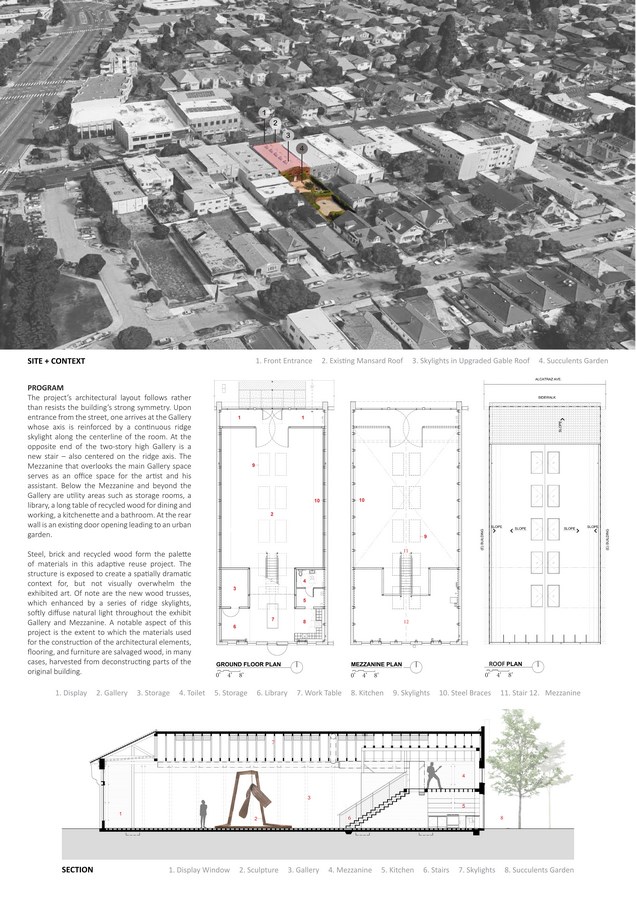
The original building was a modest gable-roofed- “shoebox” of unreinforced brick masonry (URM) walls, a wood second floor and a wood roof structure, constructed in the first half of the 20th Century. The structural resistance of the original unreinforced brick masonry (URM) walls to earthquake was highly inadequate, and whatever seismic value existed from that construction was reliant upon what the intermediate floor and roof could provide. To structurally upgrade the building, an exposed wooden roof system comprised of trusses and a wood shear diaphragm is designed to replace the existing roof. Wood is the dominant structural material in the roof structural system (trusses and shear diaphragm), framing, as well as the newly constructed Mezzanine.
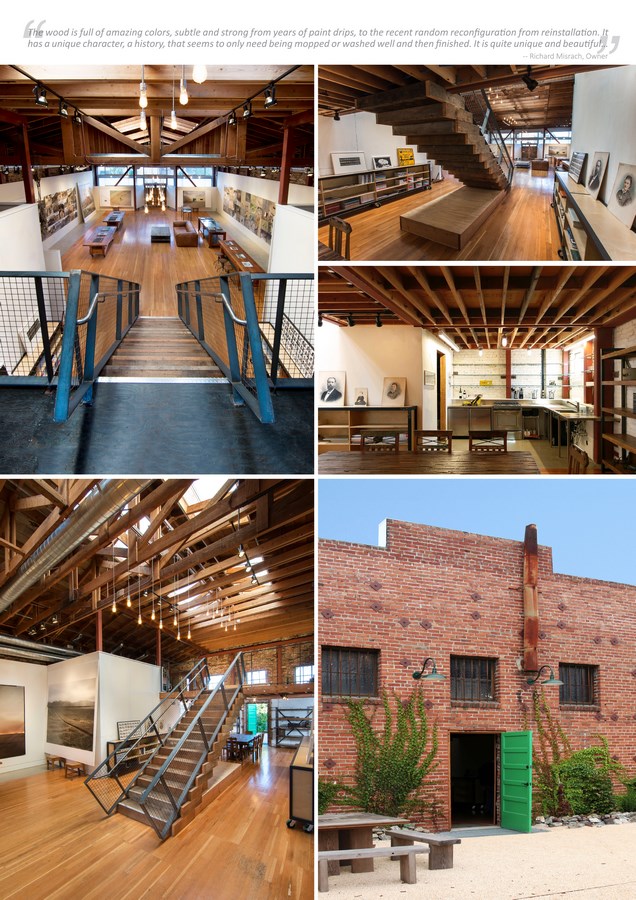
The wood salvaged from the original building may be as old as a century, and yet is not only usable, but beautiful as an exposed material. As observed by the artist-client: “The wood floor is full of amazing colors, subtle and strong from years of paint drips, to the recent random reconfiguration from reinstallation. It has a unique character, a history, that seems to only need being mopped or washed well and then finished. This would be quite unique and beautiful͙”


